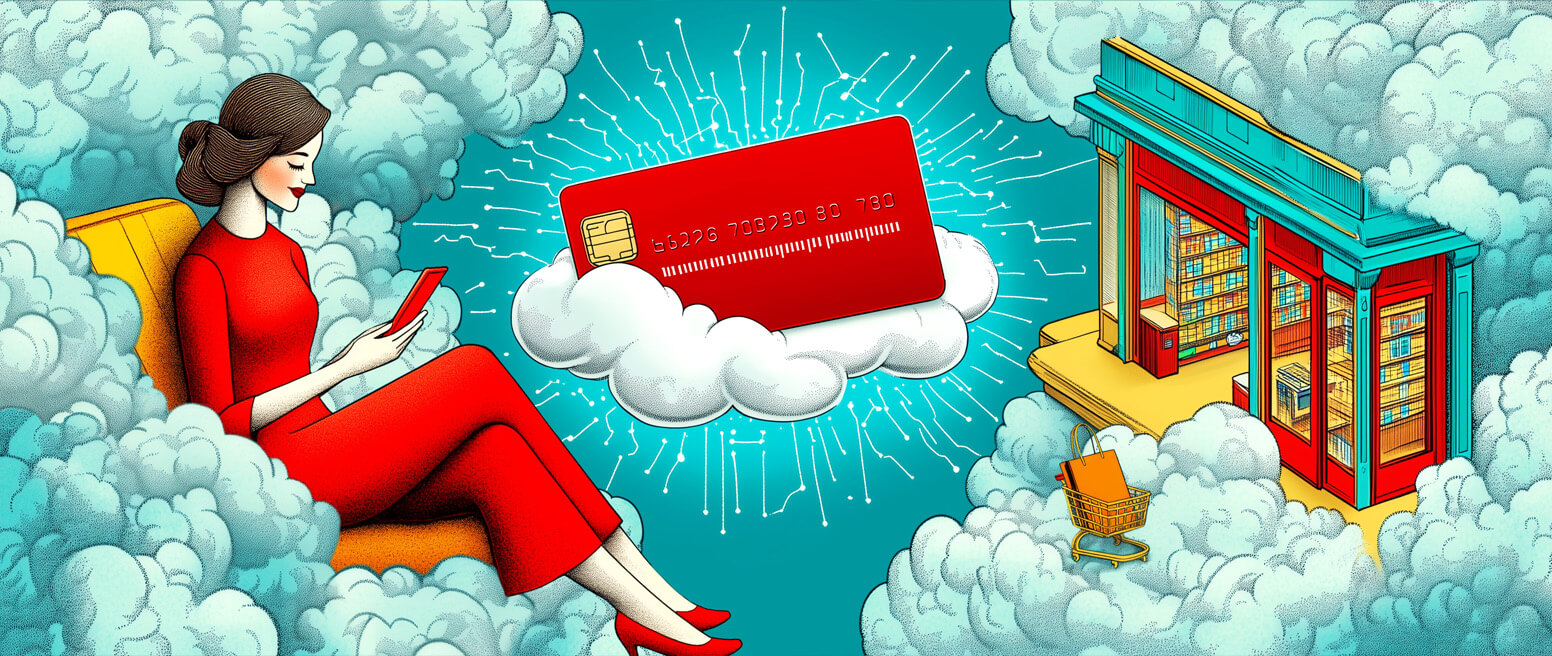Tips & Best Practices to Optimize Shipping & eCommerce Delivery
Smarter devices, faster internet speeds, and growing customer demand have made eCommerce more profitable than ever. This is good for consumers, as it usually leads to more options and lower prices. For merchants, however, it means more competitors entering the field.
That’s why online brands pour time, energy, and money into finding more ways to improve the customer experience. Websites are updated and new marketing strategies are implemented. But if there is one facet of operations that retailers commonly forget to address, it’s the delivery process.
eCommerce delivery — the “last mile” of the shipping process — is a factor that merchants frequently ignore. After all, customers are getting their orders, right? But using best practices to streamline and optimize the delivery stage can be the key that sets your business apart from other retailers.
The problem is that you don’t directly deliver your products to the customer. So, how can you influence and optimize your eCommerce delivery processes to ensure a great customer experience?
Recommended reading
- Analyzing Consumer Buying Behavior in 11 Different Verticals - Chargebacks911
- Top 15 Customer Returns Reasons in 2025 & How to Avoid Them
- Online Shopping vs In-Store Shopping: the Future of Retail?
- Economic Uncertainty Pushes Consumers to File Chargebacks
- They’re Here — Cyber Week 2024 Stats & Analysis!
- Card-Not-Present Transactions: Know the Risks & Rewards
What is eCommerce Delivery?
First, let’s clarify what we’re talking about here. When we say “eCommerce delivery,” it’s not meant to be a synonym for the fulfillment process in toto.
eCommerce delivery refers to taking a finished customer order from the closest distribution point or fulfillment center and moving it the rest of the way to the buyer’s door. It’s one piece of the overall shipping and fulfillment process. Specifically, it’s the final node in the process, often known as “last-mile delivery.”
Your main goal, as a retailer, is to make a sale (obviously). However, your job doesn’t end at checkout. Ensuring a positive impression of the goods, as those goods arrive at the buyer’s doorstep, is part of your job, too.
That’s why optimal eCommerce delivery practices matter. The last stage of a customer interaction has as much — if not more — influence over the customer’s overall experience as the first touch. And, as well see next, there are clear benefits to prioritizing this step.
Benefits of Providing a Great eCommerce Delivery Experience
86% of buyers will pay more for a great customer experience. In other words, you can see higher margins per order and build long-term customer loyalty by providing outstanding service. Product delivery is an integral part of this.
On the surface, delivery is about handing off a package to a happy customer. Indirectly, however, there is more at stake.
A successful delivery experience helps build trust, loyalty, and overall customer satisfaction. All of these can contribute to repeat business. An outstanding delivery experience offers other great benefits, too:
- A structured and optimized delivery management system may balance the costs of offering enhanced shipping times and faster delivery.
- Outstanding order delivery can be a key differentiator between your business and your closest competition.
- Customers who are happy with their delivery experience may leave positive online reviews and share their experience via social media.
- Having a reputation for on-time deliveries can encourage repeat customers, and entice new customers as well.
- Carefully packed orders and reputable carriers can minimize the number of returns, resulting in additional savings.
95% of consumers read online reviews before they shop. 58% of consumers say they would pay more for products if the brand in question has good reviews.
Challenges of eCommerce Delivery
Like most things, though, providing a great eCommerce delivery experience is easier said than done.
There are distinct logistical challenges involved with eCommerce fulfillment, especially at the delivery stage. There are a lot of moving parts involved in order fulfillment. And, while much of the order journey is subject to hiccups, the last mile probably has the most vulnerability.
Weather can cause delays, as can dense traffic or road closures. It’s important to inform the customer of such things as quickly as possible. Furthermore, the customer’s location may cause delays. There may even be natural disasters, totally outside of anyone’s control, that may cause delays or damage to goods in transit.
Another challenge is the growing interest in eco-friendly delivery. Things like planet sustainability, optimized and recyclable packing materials, and low-emissions delivery vehicles increasingly factor into consumer buying decisions. More and more, merchants are being forced to balance demands for fast, cheap delivery against the calls of an environmentally conscious market.
One other challenge to consider is that your eCommerce delivery system has to work both ways. Getting products to the consumers is the bulk of the job, but how you handle returns will also be noted. Unsatisfied buyers want simplified returns, timely refunds, and prompt shipments for replacement products.
eCommerce Delivery, Fraud & Chargebacks
Customer disputes and chargebacks are closely tied to order fulfillment and merchandise delivery practices. Two of the most common chargeback reason codes used are:
| Visa Reason Code | Mastercard Reason Code | Explanation | Causes |
| Reason Code 13.1 | Reason Code 4855 | Merchandise not received: Merchandise was not received or not received by the agreed-upon delivery date. | The merchant failed to send the product. The merchant billed the cardholder before sending the products, or the merchant didn’t send the items by the agreed-upon delivery date. |
| Reason Code 13.3 | Reason Code 4853 | Merchandise not as described or defective: The merchandise was damaged or defective upon its arrival or was not the same as described. | The merchant sent the wrong item. Or, the item was damaged during delivery. |

First party misuse of the chargeback system — commonly known as friendly fraud — is also a major problem, though. Many invalid claims are tied to delivery issues. In most cases, this comes from either misunderstanding or convenience on the part of the customer. Some examples include:
Delays
You tell a customer an order will arrive in two days. However, on the third day, it still hasn’t come. Instead of contacting you for an explanation, the buyer calls the bank and files a dispute.Damaged Goods
An order arrives on time, but the goods inside the box are damaged. Fearing that they might not be believed if they report the damage, the customer reports the incident to the bank, rather than to you or the carrier.Substitute for a Return Request
Merchandise is delivered successfully, but the buyer decides not to keep it. Believing that a refund and a chargeback are more or less the same thing, the buyer bypasses you and disputes the purchase with the bank.In these or other similar situations, the cardholder is often making an innocent mistake. They may misunderstand the chargeback process. Or, in some cases, the buyer may not even be aware that their actions will result in a chargeback.
At the same time, there is also an increasing number of fraudsters who deliberately play the system to their advantage. They may order a high-ticket item like a smart TV, knowing ahead of time that they intend to call the bank and falsely claim the product was never delivered. If the chargeback is successful, you’ll be hit twice; you will have lost the TV, but will also have to refund the customer and pay chargeback fees.
This is where things like tracking numbers, insurance, and delivery receipts come into play. If you can supply evidence that can contradict the cardholder’s claim, you may be able to have the chargeback reversed through the representment process.
All that said, it’s best to act so as to prevent chargebacks (and other delivery-related issues) whenever possible. The more thorough your delivery process, the more likely you’ll have what you need to contest false disputes.
eCommerce Delivery Best Practices
As we’ve mentioned, eCommerce delivery management is just one element of the entire shipping process. When we start looking at best practices, though, it’s important to look at the full picture. eCommerce delivery best practices are intimately tied to other facets of the fulfillment process:
Go the Extra Mile
The last mile of the eCommerce delivery process is an important element in your overall shipping and fulfillment strategy. Fast, reasonably priced deliveries improve the customer experience and help build loyalty. Implementing best practices can ensure that things go smoothly from stockroom to stoop.
That said, there are still challenges with maintaining an efficient delivery system, including the risk of receiving invalid chargebacks. While focusing on delivery chargebacks will help, you ultimately need a comprehensive chargeback management strategy that addresses the issue from all angles.
Chargebacks911® has a wealth of experience-based knowledge and expertise in providing cost-effective prevention and risk mitigation strategies. Our experts can help you discover the true sources of all your chargebacks, and implement an end-to-end management strategy to retain revenue and prevent future disputes. Contact us today to learn more.
FAQs
What is eCommerce delivery?
eCommerce delivery is the last step of the order fulfillment process; the so-called “last mile.” This is in contrast to eCommerce shipping, is an umbrella term for the process of moving orders between the online store and the customers’ physical address.
What is “last mile” delivery?
Last mile refers to the transportation of an order from the closest distribution point to the final destination, the customer.
Why is it essential to focus on delivery in eCommerce?
An efficient and effective eCommerce delivery system helps deliver a positive customer experience, reduce processing times, increase order accuracy, and maintain profitability.
Why is shipping so important for eCommerce?
In a nutshell, it keeps customers happy. When ordering from you, consumers expect fast, effortless, and affordable shipping. Since business growth is largely dependent on maintaining customer satisfaction, providing effective eCommerce delivery is critical to success. Fail to deliver that, and your customers may start looking elsewhere to shop.
How can I reduce delivery costs?
Tips for reducing delivery costs include negotiating price points with multiple shipping companies, using shipper-supplied packaging, working with suppliers to minimize redundancy, and using local or regional carriers when possible.














